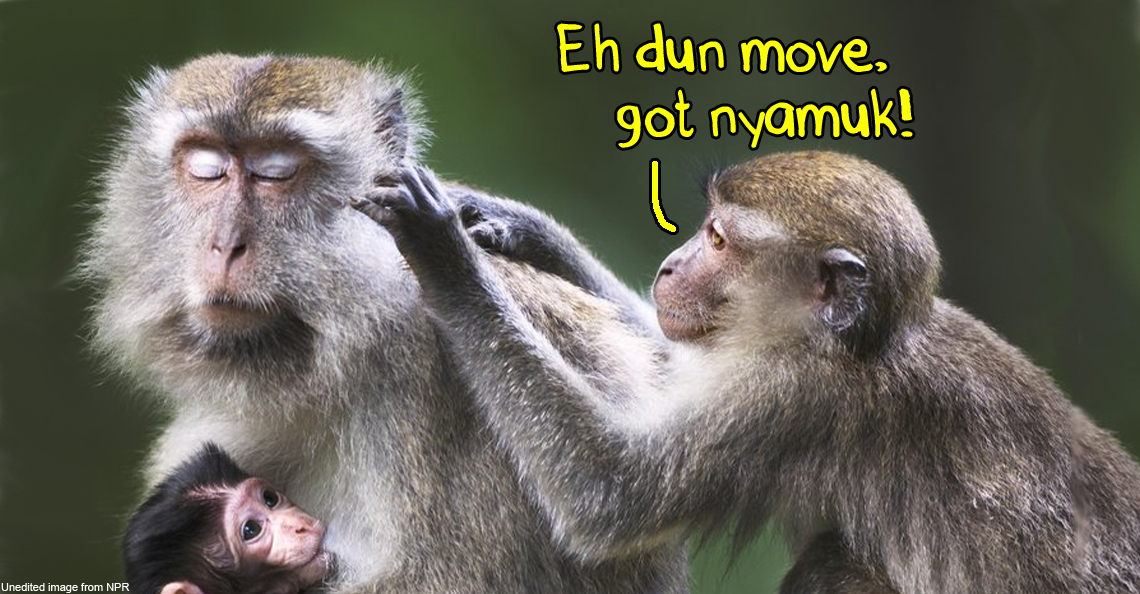The epic story of how 2 Malaysian scientists cured Sarawak of… lethal monkey malaria?!
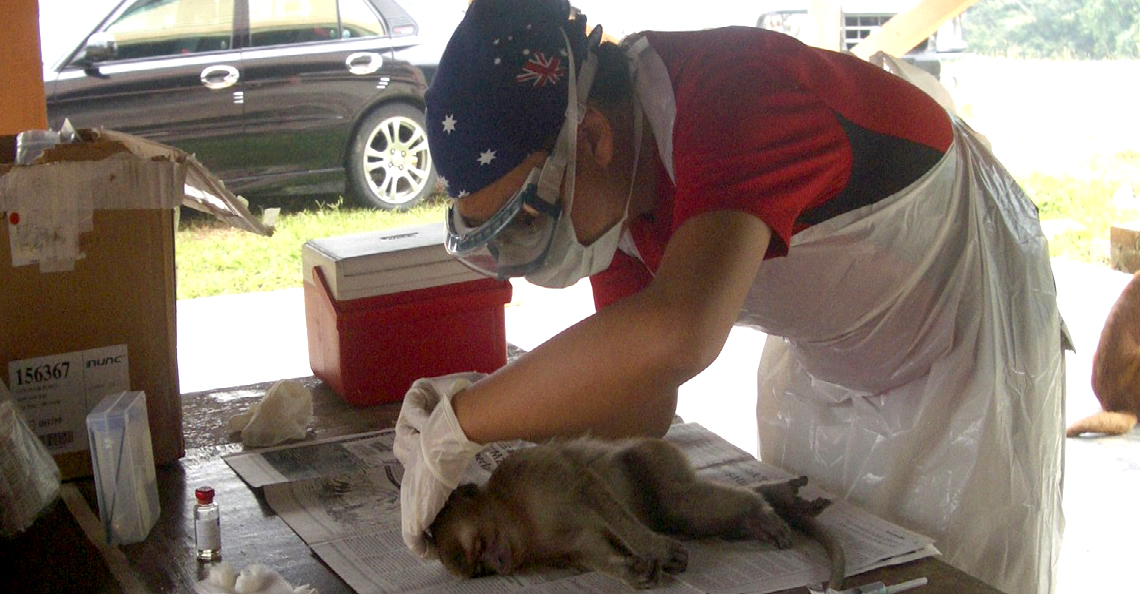
- 2.5KShares
- Facebook2.4K
- Twitter8
- LinkedIn15
- Email18
- WhatsApp65
Malaria is something most of us have heard about, and know to be a mosquito-borne illness that’s a big issue in African countries probably. But in 1999, malaria hit a little closer to home- in Sarawak’s Kapit region, to be exact. Many people were being hospitalised for malaria, and a handful were even dying!
Most of the patients were admitted for P. malariae, one of the more common strains of malaria in Sarawak. This is probably not common knowledge to the most of us, but someone who knew this -as well as the ins and outs of malaria- is Dr. Balbir Singh, a doctor who’d been studying malaria up-close since 1984. He started focusing his efforts on curbing malaria after a life-changing trip to Africa.
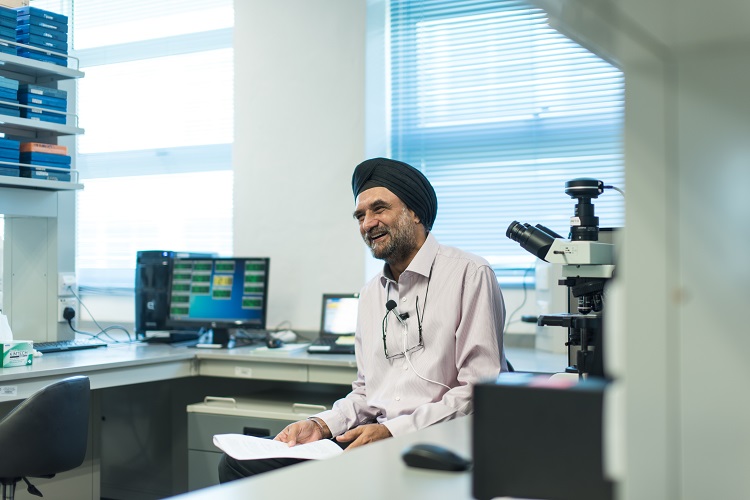
“When I was [in Malawi, Africa], I saw a really young child die of cerebral malaria after she had been in a coma for three days. It was heart-wrenching.” – Dr. Balbir
But when Dr Balbir went to Kapit, he realised something was wrong.
Here’s the thing… the kinda malaria that people were being treated for, P. malariae, could’ve EASILY been cured with pills. With the medication, patients could recover in less than a week, so why were the wards filled with malaria patients? They were staying sick for a long time and it just wasn’t making any sense!

 Original photo from Healthworks
Original photo from HealthworksWith that in mind, the self-professed malaria detective had a job to do: to figure out what the heck was going on Kapit.
First, he cucuk 208 people for their blood samples
Like any detective, Dr. Balbir needed clues to figure out what was happening. His first one was found in the blood of four patients from Kapit Hospital. To find out if it was P. malariae, he first had to check their blood’s parasite count, which would usually be fairly low. But to his surprise, there were very high levels of parasites in these patients’ blood- which means it wasn’t P. malariae after all.
“All scientists have what we call ‘aha’ moments. The first ‘aha moment’ was when we used a molecular assay to examine 4 blood samples from cases diagnosed as P. malariae, and they turned out to be negative for P. malariae. That indicated that either our molecular assay was not working because there were some differences in the DNA sequences, or that these patients were infected with a different type of Plasmodium.” – Dr Balbir tells CILISOS
Here’s some help, for the less science inclined (like us):
- Molecular assay: an investigation of molecules
- Plasmodium: the malaria parasite; the P in P. malariae

That means… the patients were being given the wrong treatment. But it’s alright, because they could be infected by the other three forms of malaria– P. vivax, P. falciparum or P. ovale, with the first two being pretty common in Sarawak too. There’s even super malaria these days. So no (major) damage done, right?
Dr. Balbir and his team then decided to test the DNA of the malaria parasites to find out what in the world this disease could be. To their surprise, when the results came back, 99.6% of the parasite’s DNA matched none of the three. Huh? How is that possible??
Instead, it came out as P. knowlesi, a strain of malaria only found in… *jeng jeng jeng*…
… FRIGGIN’ MONKEYS!

“That was the second ‘aha’ moment, when we found that the DNA sequence was P. knowlesi and not P. malariae. Understandably, there was great excitement in the lab when we got these results. At that time we had no idea that P. knowlesi was so prevalent in Malaysia. We then developed a new molecular detection assay for P. knowlesi and conducted a study on patients at Kapit Hospital. We found 58% of 208 malaria patients were infected with this monkey malaria parasite and none were infected with P. malariae!!” – Dr. Balbir
Ok, so now we knew that monkey malaria was a thing. But… how come human can kena monkey’s malaria one?!?
Then, he went to chase down some monkeys
Now that Dr. Balbir knew what the mystery illness was, he had to find out what was causing it. Were people just being bit by monkeys? Was it spreading by air? In this situation, Dr. Balbir did what any person would do… capture wild monkeys. Ok maybe not any person would do that. But he needed to capture the long-tailed and pig-tailed macaques to test them for P. knowlesi too.
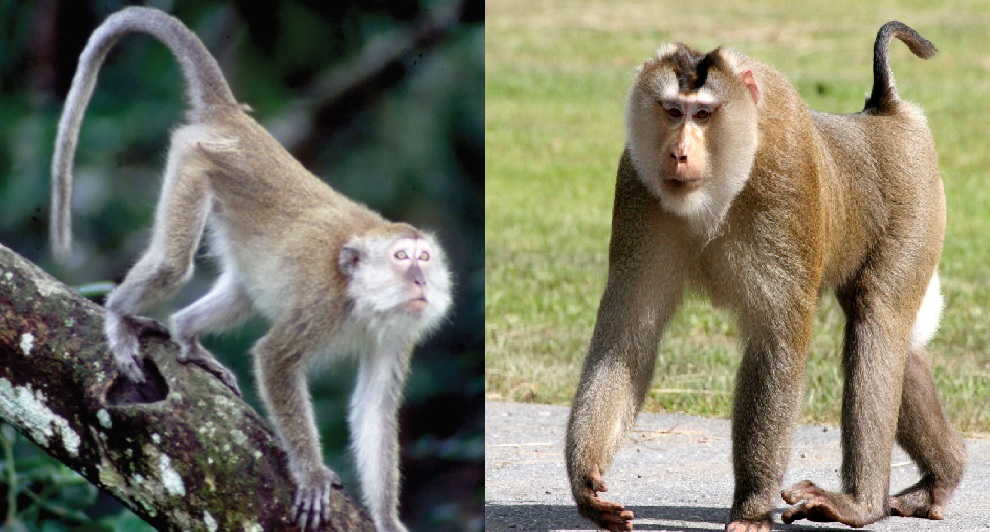
Under the sweltering jungle sun, Dr. Balbir’s team painstakingly built aluminium monkey traps, making them in sections so they could be carried long distances into the forest, or transported by boat. They spoke to farmers who’d had their crops ransacked by macaques and set up their traps there, hoping that they would return.
And return they did. For the first couple of weeks, the team basically created a fruit buffet for monkeys, putting rambutans and bananas in the traps which weren’t closed, so the monkeys sauntered in and out with free and easy meals all day err day.
But once the traps became a crowd favourite, they closed the doors on the side of the traps, opening only the one at the top. So when the monkeys went in for their buffet this time, they would fall into the traps and wouldn’t be able to climb out anymore, because the inner walls of the wall were too slippery. Guess you could say that the monkeys getting stuck in the cage would be a big slip up.
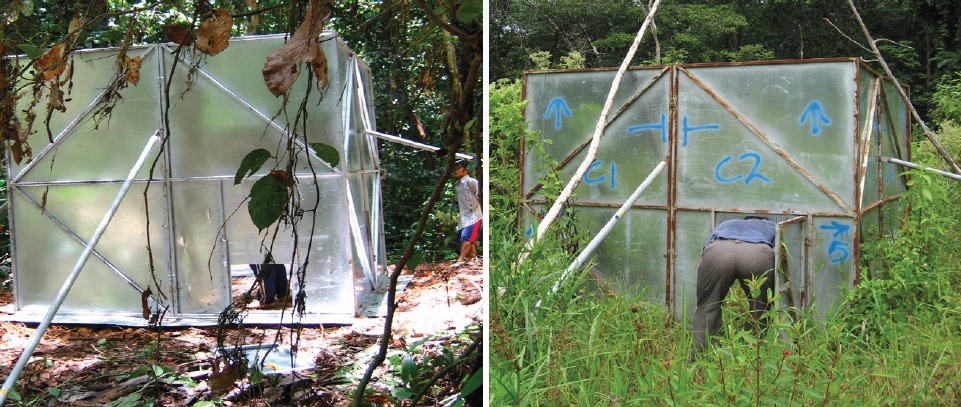
Once the trap caught its newest victim, Dr. Balbir and his team would take the agitated monkey out of the trap, lay it on a table in their makeshift lab and take its blood. Then they would tag them with a microchip so that they wouldn’t test on them again, and release them back into the wild.
But not all the monkeys tested were from their traps- the team also went around the Kapit region to look for monkeys. One time, when driving on the logging tracks, they spotted a hunter with a mysterious basket on his back…
“We asked him if he had seen any monkeys and he said ‘I just saw a troop and I shot one!!’ He then lowered his basket to show us the monkey he had shot. It was still warm and we were able to get a blood sample. When we analysed it later, we found it to be P. knowlesi-positive. What are the chances of stopping someone randomly and finding a P. knowlesi-positive monkey on his back??” – Dr. Balbir
But with any investigation, there have been moments where Dr. Balbir hasn’t been as lucky in getting P. knowlesi samples. Once, he had just completed a mosquito collection exercise, where the people from a longhouse had been very helpful. To thank them, Dr. Balbir returned the next day with chicken, fish and other food to cook… but the villagers were already cooking something else…
When we reached the longhouse we noticed that something was already being barbecued… it was three long-tailed macaques. I told the hunter that he should have told me that he would be shooting monkeys because I would have been interested in a blood sample. He said he thought I would be interested and had kept me some blood. He came back with one pot of monkey blood collected from all the three monkeys! I told him that it would have been better if they had been stored in individual containers. Its okay, he said, these monkeys are not fully cooked. So he got out his parang and proceeded to cut through the bone of each monkey and I was able to get some blood on filter paper!! The samples on this occasion turned out negative for malaria.” – Dr. Balbir

After months of monkey trapping, Dr. Balbir and his team then tested the blood they’d obtained and found that more than half of the monkeys tested positive for monkey malaria. There haven’t been those kind of statistics ever before.
By testing the blood’s gene, they also found that it matched the monkey malaria gene found in humans. Which meant that the monkeys in Sarawak were, in fact, causing monkey malaria. Maybe this is why East Malaysia has had over 4700 reported cases of monkey malaria in 2004-2016, with all other forms of malaria falling in a far second place.
He also let mosquitoes suck his blood
Ok so here’s Dr. Balbir’s situation. He knew that obviously, malaria is transmitted through mosquitoes. And now he also knew that both monkeys AND humans had P. knowlesi- monkey malaria. So the last piece of the puzzle was to figure out which mosquitoes were transmitting the disease from the monkeys to the people in Kapit.
To solve this part of the mystery, Dr. Balbir found himself sitting smack in the middle of the forests of Kapit at three in the morning, waiting for mosquitoes to come get a taste of his sweet, sweet blood. When a mosquito landed on his leg, he would catch it in a tiny glass vial. It wasn’t exactly on the list of the Kapit nightlife scene (they’d have to do it from 6PM-6AM), but it was important.

They also needed to get mosquitoes to bite monkeys, just to see if it was the same mosquitoes infecting both monkeys and humans with P. knowlesi. So the Mosquito Detectives™ decided to put monkeys in traps, with little opening to allow mosquitoes to come and feed on them. Every hour, they would collect the mosquitoes which were sitting around in the traps, full from their feast.
Over the 11 months of research, more than 4,000 mosquitoes were caught, put under a microscope and dissected. Between all the mosquitoes found, the team found that Anopheles latens was the main -if not only- breed that carried blood which was P. knowlesi positive.
The mystery was solved. These mosquitoes were biting monkeys which were infected with monkey malaria, then biting humans, transferring the illness to them. For the dozens of people stricken by P.knowlesi, this discovery would save their lives.
After finding out what it is, they needed a cure
When it comes to infectious diseases, Dr. Timothy William is the best there is. He’d worked with the teams managing the SARS outbreak back in 2003, and H1N1 in 2009- what couldn’t he handle? So when there were more and more patients coming into the Kapit Hospital for monkey malaria -with some even dying because of it-, they knew that Dr. Timothy was the guy to call.
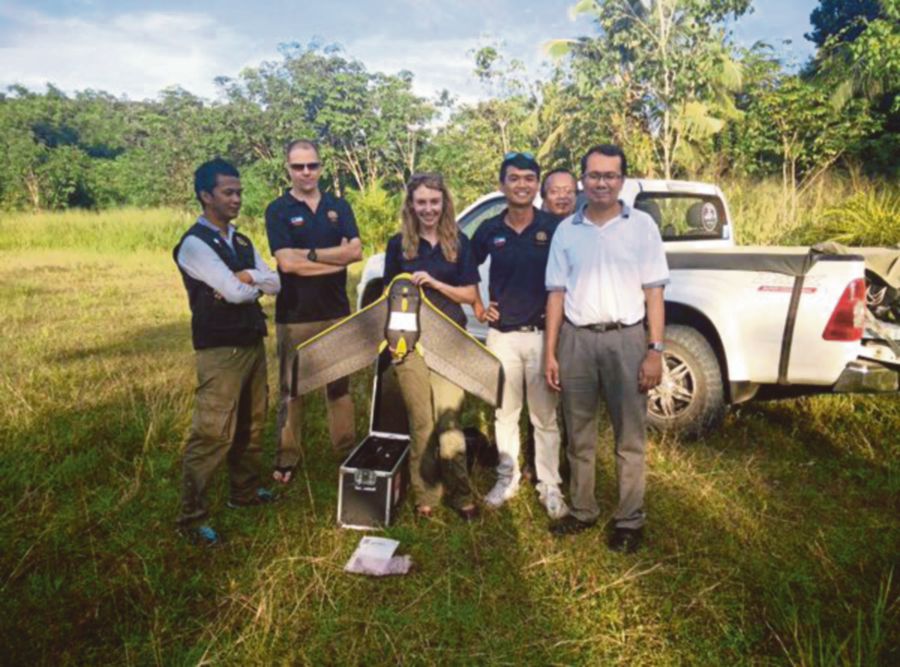
Now, Dr. Timothy was dedicated to being a good doctor. But like Dr. Balbir, he was also moved to action by the suffering that malaria has caused to people.
“Another young man left his home and family to join the army. In the jungle, he developed a fever, rapidly becoming ill and died before he could even reach the hospital. The cause of death was P. malariae malaria, which later was identified as P. knowlesi. All human beings die. A hard fact of life, which we must accept. Dying because of an unknown illness, or a known illness, where there is treatment readily available, is impossible to accept. Every single malaria death could have been prevented.” – Dr. Timothy (edited for clarity, quoted from NST)
The treatment that was being used, oral antimalarials (or pills la basically) weren’t cutting it. The only other treatment was to get these same antimalarials via IV-drip, and even that wasn’t working. People were still staying sick for very long, and a handful of people died 
By observing patients whom they could now identify as P. knowlesi-positive, Dr. Timothy and his team carefully documented how the illness -both the minor and severe cases- looked like, what the symptoms were and, most importantly, how to treat it.
Through months of research, Dr. Timothy was able to prove that Artemisinin Combination Therapy (ACT), which combine different kinds of medicine, was the best form of treatment for monkey malaria. This discovery didn’t just stop at monkey malaria, though- this form of treatment is effective for ALL forms of malaria.
As soon as the meds came out, people were getting cured of P. knowlesi malaria two times faster than they usually did, and didn’t have to get admitted for it anymore!
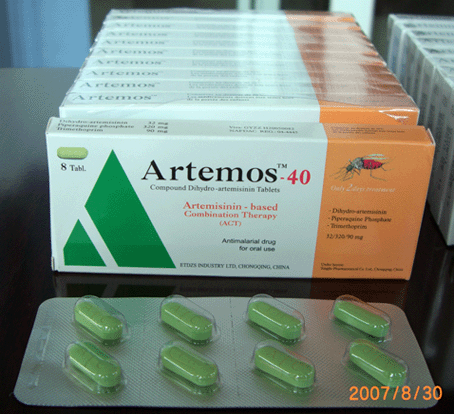
These two Malaysians saved the country, and then the world
Aside from being class-A malaria detectives by our books, Dr. Balbir and Dr. Timothy are both this year’s recipients of the Merdeka Award, an award for people who have contributed to the country in some kind of way, which they definitely have. They managed to figure out what monkey malaria was, and find an effective cure for it- saving the thousands of Malaysian lives that could potentially have even died from it.
Besides Malaysia, there are also cases of monkey malaria in Indonesia, Thailand, Myanmar, Singapore, the Philippines, Vietnam, Brunei and China, so this discovery goes beyond our country.

Thanks to them, we can now sleep easier at night knowing that if we ever get bitten by a monkey malaria-positive mosquito, we’ll be safe…
(… until something like tapir malaria comes along o_O)
- 2.5KShares
- Facebook2.4K
- Twitter8
- LinkedIn15
- Email18
- WhatsApp65

